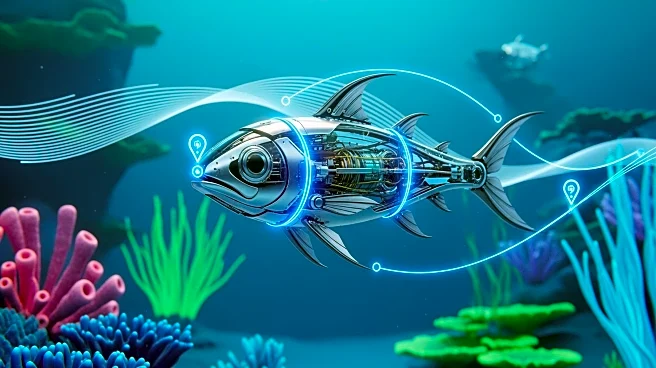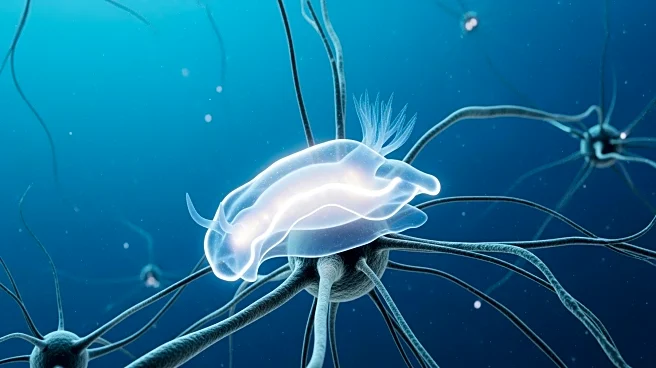What's Happening?
Scientists at EPFL and Duke University have successfully replicated the neural circuitry of zebrafish, allowing them to react to visual stimuli and maintain their position in flowing water. This research,
published in Science Robotics, provides a comprehensive view of how brain circuits, body mechanics, and environmental factors interact to control behavior. The study utilized simulations, robots, and live fish to explore the embodiment of larval zebrafish, revealing how the body affects perception. The BioRobotics Lab at EPFL developed bioinspired robots to study brain-body interactions, while Duke University provided neural network architecture based on real-time imaging data from zebrafish brains. The research discovered that most neural signals driving zebrafish behavior originate from a small part of the retina, and identified two new neuron types explaining the fish's response to unusual stimuli.
Why It's Important?
This research is significant as it advances the understanding of sensorimotor coordination and neural navigation in animals. By reverse engineering zebrafish neural circuitry, scientists can better comprehend how environmental factors shape brain function, which is crucial for developing bioinspired robotic systems. The findings have implications for biomedical research, offering insights into how vision alone can be sufficient for maintaining position in water currents. This could lead to advancements in robotics, particularly in designing systems that mimic biological functions for practical applications. The open-source platform developed from this research allows other scientists to study visuomotor coordination, potentially leading to breakthroughs in understanding animal behavior and developing new technologies.
What's Next?
The BioRobotics Lab plans to extend this research to study zebrafish swimming patterns further. The simulation and robot design are available as open-source tools, encouraging other researchers to explore visuomotor coordination in zebrafish and other animals. This could lead to new discoveries in sensorimotor mechanisms and their applications in robotics and artificial intelligence. The ongoing research may also inspire innovations in designing robots that can navigate complex environments using minimal sensory input, similar to biological organisms.
Beyond the Headlines
The study highlights the importance of considering the body in which a brain evolved when studying neural circuits. This approach challenges traditional neuroscience methods that often isolate brain function from environmental factors. By integrating body mechanics and environmental interactions, researchers can gain a more holistic understanding of brain function, potentially leading to ethical considerations in how animal models are used in research. The findings also underscore the potential for interdisciplinary collaboration between neuroscience and robotics, paving the way for future innovations in both fields.











